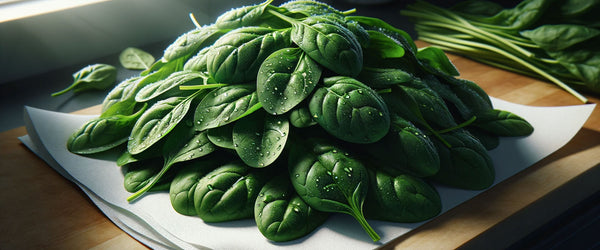Understanding Artificial Green Food Dyes and Their Side Effects
Chemical Names of Green Dye
The incorporation of artificial green dyes, notably Fast Green FCF and Green S, into the food industry serves to significantly enhance the visual appeal of a plethora of products, ranging from beverages to baked goods. These synthetic dyes, created from petroleum, are designed to catch the eye and make food items more enticing, particularly to children. Fast Green FCF and Green S stand out as some of the most prevalent green dyes, underscoring a broad consumer demand for eye-catching foods. However, their synthetic, petroleum-based origins prompt a deeper examination of what we are adding to our diets and the broader implications for health and safety.
Derived from Petroleum
This practice of deriving vibrant colors from petroleum substances through complex chemical processes illustrates the artificial nature of the additives that color many supermarket foods. The widespread use of such petroleum-derived compounds in food coloring highlights a tension between the desire for visually appealing products and the growing consumer demand for naturalness and transparency in the food supply. As health consciousness rises, so does scrutiny over the safety and environmental impact of synthetic dyes, driving a reevaluation of their role in our food industry.
Unraveling the Production of Green Dyes
Green food dyes like Fast Green FCF (FD&C Green No. 3 or E143) and Green S (E142) are synthetically produced on an industrial scale for use in the US food industry. The process, though intricate, starts with simple raw materials: hydrocarbons derived from petroleum or coal tar.
The process involves several stages. First, the hydrocarbons undergo a reaction to produce an intermediate compound known as aniline. This aniline is further processed and coupled with other chemicals to produce the final dye compound. Specifically, Fast Green FCF is derived from the combination of aniline with a benzene derivative under high heat. Similarly, Green S is produced by the reaction of aniline with naphthalene, another aromatic compound.
The Environmental Impact of Green Dye Production
While these vibrant green hues might add appeal to food, the manufacturing process can take a toll on the environment. The production of food dyes is energy-intensive, contributing to greenhouse gas emissions. Additionally, the raw materials – petroleum and coal tar – are non-renewable resources.
Furthermore, the dye industry uses significant amounts of water, both in the production process and for dilution of waste products. The wastewater produced may contain residual dye and other toxic byproducts, which if not properly treated, can pollute waterways, harm aquatic life, and affect the quality of water resources.
The manufacturing process can also result in solid waste, which includes unused raw materials, byproducts, and spent catalysts. Improper disposal of this waste can contribute to soil pollution and present challenges in waste management.

Unmasking Green Dyes: Fast Green FCF and Green S
Two common artificial green dyes used in the food industry are Fast Green FCF (also known as FD&C Green No. 3 or E143) and Green S (known as E142). Their vibrant hues are often used to make products more visually appealing, but these chemical additives are not without their potential risks or side effects.
Decoding Ingredient Lists for Green Dye
Ingredient lists on food packaging can sometimes resemble complex chemical equations, making them challenging to decode. In the case of green dyes, they may be listed under a variety of names. Fast Green FCF may be listed as FD&C Green No. 3, Food Green 3, or E143. Meanwhile, Green S could be referred to as E142.
The key to identifying these dyes is understanding the different naming systems. In the United States, FD&C refers to the Federal Food, Drug, and Cosmetic Act, which authorizes these dyes for use in foods, drugs, and cosmetics. In Europe, the E number system is used, with E143 and E142 referring to Fast Green FCF and Green S, respectively.
Health Concerns Associated with Synthetic Green Dyes
Health concerns linked to artificial green dyes, particularly Fast Green FCF, encompass a range of issues from allergies to severe skin reactions in certain cases. These adverse effects spotlight the potential risks associated with the use of synthetic colorings in our food, raising important questions about the trade-off between aesthetic appeal and health. As such ingredients are commonly found in products aimed at children, the health implications for this vulnerable group cannot be overlooked. The evidence pointing to the risks of artificial food colorings suggests a need for a cautious approach to their inclusion in children's diets, particularly given the potential for long-term health consequences.
Furthermore, the research published in "The Lancet" indicating a correlation between artificial food dyes, like Green S, and increased hyperactivity in children, has deepened concerns about the impact of these additives on child health and behavior. This connection between synthetic dyes and developmental issues underscores the urgency of reevaluating the presence of artificial colors in foods consumed by children. As understanding of these potential health effects expands, so does the demand for safer, more natural food coloring options, reflecting a growing consensus among parents and health professionals on the need to prioritize the well-being of the next generation.
Recognizing Allergic Reactions
While generally recognized as safe by the FDA, Fast Green FCF can still cause allergic reactions in some people. These reactions can range from mild symptoms such as skin rashes and itching, to more severe reactions like swelling of the lips, face, or tongue, difficulty breathing, and dizziness. In extreme cases, a severe allergic reaction known as anaphylaxis can occur, which is a medical emergency. Anyone showing signs of a severe allergic reaction should seek immediate medical attention.
Top Foods Containing Green Dye
- Mint-flavored sweets and desserts: From mint chocolate chip ice cream to after-dinner mints, green dye is often used to enhance the visual appeal of these treats.
- Green soft drinks and mixers: Many beverages, particularly those with lime or green apple flavors, contain green dye.
- Patrick's Day Specials: Foods associated with St. Patrick's Day, such as green cupcakes or cookies, often contain green dye to mark the occasion.
Unexpeted Foods Containing Green Dye
Here are the top 10 common food items where green dyes might be hiding:
- Cereal: Brightly colored rings and puffs can be a delightful morning sight for children. However, the brilliant greens seen in many cereals are often the result of artificial dyes, including FD&C Green No. 3.
- Packaged Desserts: Those strikingly green pre-packaged pies, cakes, and cookies owe their vibrant color to synthetic dyes. Always check the label before adding them to your cart.
- Green Beverages: Sodas, sports drinks, and even some juices can contain green food dye. If the drink is a vivid green, it's a safe bet there's some artificial dye involved.
- Candy: The luminous green candies, gummy bears, and lollipops are often the product of synthetic food dyes.
- Ice Cream: Even ice creams, particularly mint or lime-flavored ones, can contain artificial green dye.
- Popsicles: Like ice cream, popsicles, particularly the green ones, often contain artificial food dyes to enhance their color.
- Gelatin Desserts: The cheerful colors of gelatin desserts can come from synthetic dyes, including green.
- Frosting: Green frosting, whether on cakes or cookies, often uses artificial green dye for that bright, eye-catching hue.
- Packaged Snacks: From chips to popcorn, if it's green and comes in a package, it likely contains artificial food dye.
- Salad Dressings: Yes, even salad dressings! Particularly ones with green hues like zesty Italian or Caesar can contain artificial green dyes.
How Other Countries Treat Artificial Green Dye
- European Union. In the EU, Fast Green FCF (also known as FD&C Green No. 3) and Green S (or E142) are strictly controlled. E142, for instance, is not approved for use in many EU countries due to potential health risks. The EU has a stringent 'safety first' approach when it comes to food additives, and all colorants must undergo a rigorous approval process before they can be used.
- Australia and New Zealand - Fast Green FCF is permitted, but its usage is limited. The Australia New Zealand Food Standards Code restricts the amounts of this dye that can be used in food and mandates clear labeling. Green S, on the other hand, isn't approved for use in these countries.
- Canada - Fast Green FCF is approved, but its usage is closely monitored and restricted to certain food types. As for Green S, it isn't listed among the permitted color additives in Canada's List of Permitted Coloring Agents.
- Japan - Both Fast Green FCF and Green S are regulated under the country's Food Sanitation Act. The law outlines the permitted uses and maximum levels of these dyes in food and beverages.
Natural Alternatives to Artificial Green Food Dye
If nature is abundant in one color, it would be green. Turn to leaves to impart their chlorophyll into vibrant greens, especially spinach.
Read More: How to Make Your Own All-Natural Green Food Coloring and Dye
















